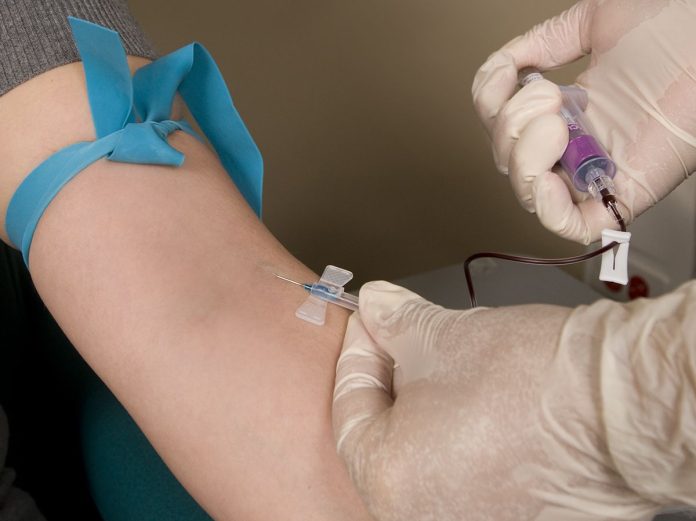After six years of exhaustive research, a UCLA-led team has developed the first standardized procedure for measuring one of the earliest signs of Alzheimer’s disease: atrophy of a portion of the brain known as the hippocampus. Earlier diagnosis can lead to interventions to slow the progress of the devastating neurological disease. The findings were published in the February edition of the journal Alzheimer’s & Dementia.
The study authors note that their research denotes the final step in an international consortium’s successful effort to develop a unified and reliable approach for the evaluation of signs of Alzheimer’s-related neurodegeneration through structural imaging tests, which are essential procedures for diagnosing and monitoring the disease.
The study involved the use of brain tissue from deceased Alzheimer’s disease patients. The research team led by Liana Apostolova, MD, director of the neuroimaging laboratory at the Mary S. Easton Center for Alzheimer’s Disease Research at UCLA, validated that the newly agreed-upon method for measuring hippocampal atrophy in structural MRI tests correlates with the pathologic changes, which are hallmarks of the disease: the progressive development of amyloid plaques and neurofibrillary tangles in the brain.
Dr. Apostolova explained, “This hippocampal protocol will now become the gold standard in the field, adopted by many if not all research groups across the globe in their study of Alzheimer’s disease. It will serve as a powerful tool in clinical trials for measuring the efficacy of new drugs in slowing or halting disease progression.”
The brain is the least accessible and most challenging organ to study in the human body; thus, Alzheimer’s disease can only be definitively diagnosed by examining brain tissue after death. In living patients, Alzheimer’s disease is diagnosed by evaluating other health factors, known as biomarkers, together with memory loss and other cognitive symptoms.
The hippocampus is a small area of the brain that is involved in memory formation; memory loss is the earliest clinical sign of Alzheimer’s disease. Its shrinkage or atrophy, as determined by a structural MRI exam, is a well-established biomarker for the disease; thus, structural MRI is widely used in both clinical and research settings to diagnose the disease and monitor its progression. However, until now, the effectiveness of structural MRI has been limited due to the various approaches being used to identify the hippocampus and measure its volume; this situation has called into question the validity of this approach. A typical hippocampus is about 3,000 to 4,000 cubic millimeters in volume. However, Dr. Apostolova explains that two scientists analyzing the same structure can come up with a difference of as much as 2,000 cubic millimeters. Furthermore, no previous study has verified whether estimates for the volume of the hippocampus using MRI corresponded to actual tissue loss. To address this situation, the European Alzheimer’s Disease Consortium–Alzheimer’s Disease Neuroimaging Initiative was established to develop a Harmonized Protocol for Hippocampal Segmentation, or HarP, which represents an effort to establish a definitive method for measuring hippocampal shrinkage through structural MRI in a way that best corresponds to the Alzheimer’s disease process. Once the HarP was established, Dr. Apostolova and four other researchers were invited to develop the gold standard for measuring the hippocampus to be used by anyone employing the HarP protocol. The UCLA-led team then confirmed the technique and ensured the changes in the hippocampus corresponded to the hallmark pathologic changes associated with Alzheimer’s disease. Dr. Apostolova said, “The technique is meant to be used on scans of living human subjects, so it’s important that we are absolutely certain that this methodology measures what it is supposed to and captures disease presence accurately.” To accomplish this, her team used a powerful 7 Tesla MRI scanner to take images of the brain specimens of 16 deceased individuals, nine who had Alzheimer’s disease and seven who were cognitively normal, each for 60 hours. She noted that this provided unprecedented visualization of the hippocampal tissue.
After applying the procedure to measure the hippocampal structures, the investigators analyzed the tissues for two changes that denote the disease: a buildup of amyloid tau protein and loss of neurons. The team found a significant correlation between hippocampal volume and the Alzheimer’s disease indicators. Dr. Apostolova explained, “As a result of the years of scientifically rigorous work of this consortium, hippocampal atrophy can finally be reliably and reproducibly established from structural MRI scans,”
The new technique can be used immediately in research settings such as clinical trials,; however, the next step will be to use the standardized protocol to authenticate automated techniques available for measuring the hippocampus. In so doing, the protocol could be used more widely, including for the diagnosis of the disease in doctor’s offices and other patient care settings.








